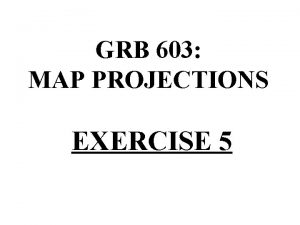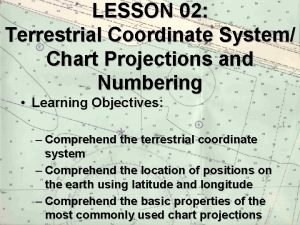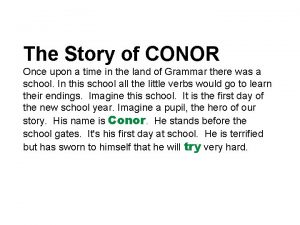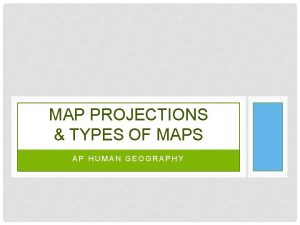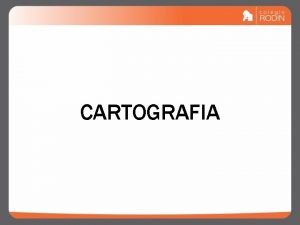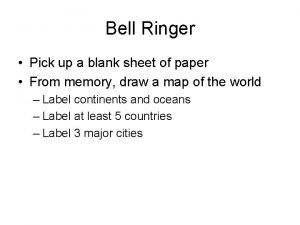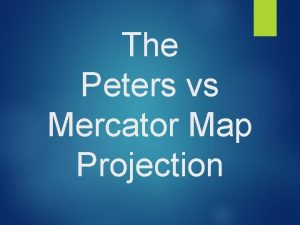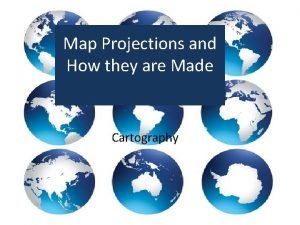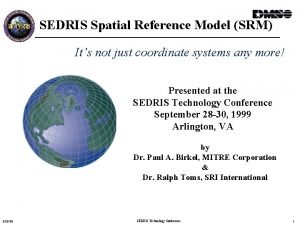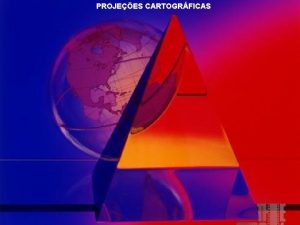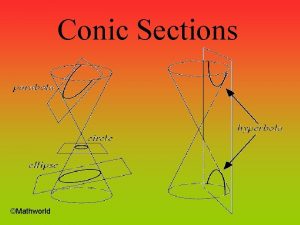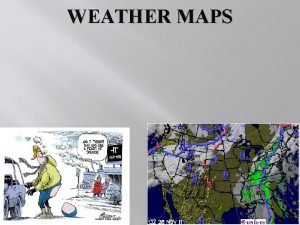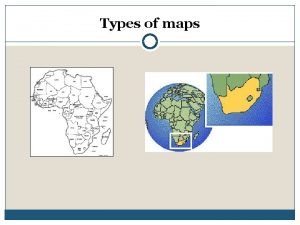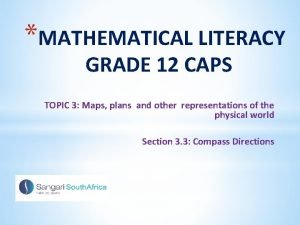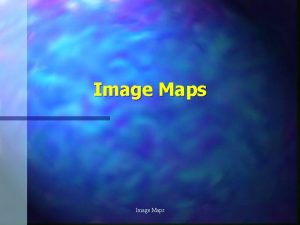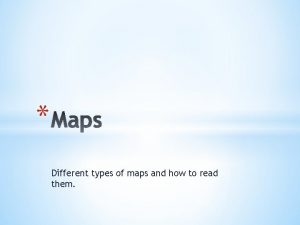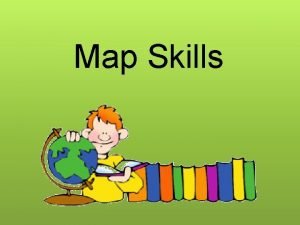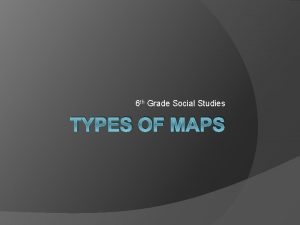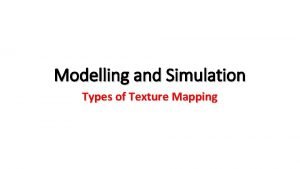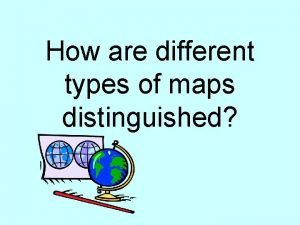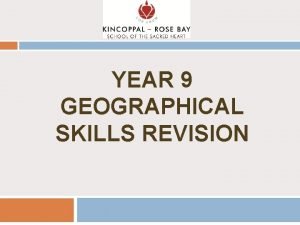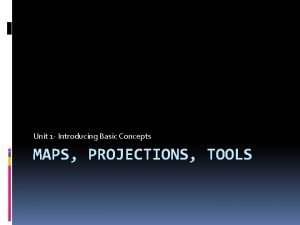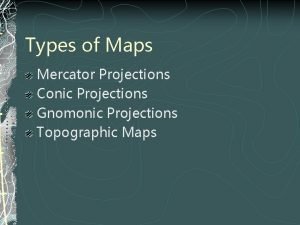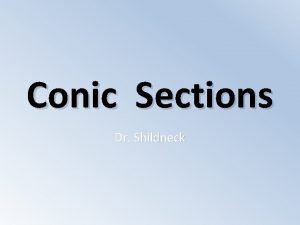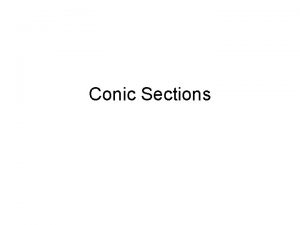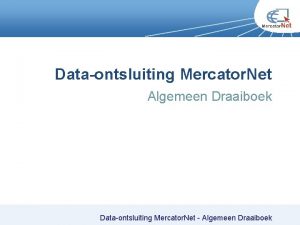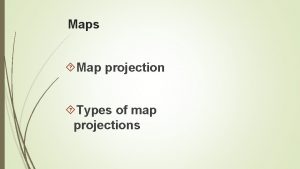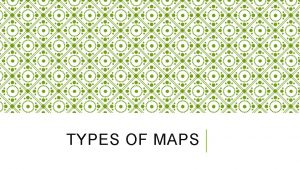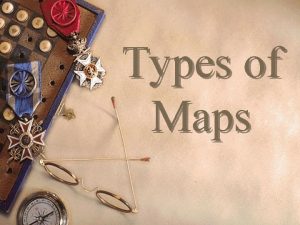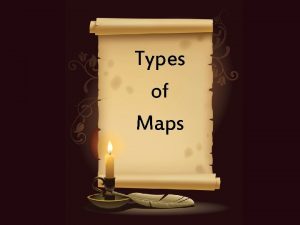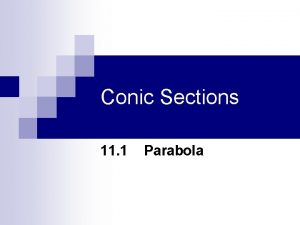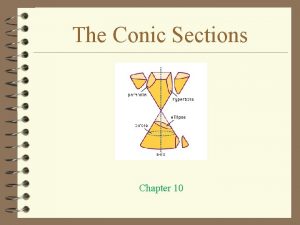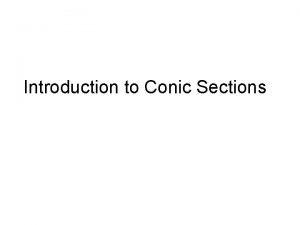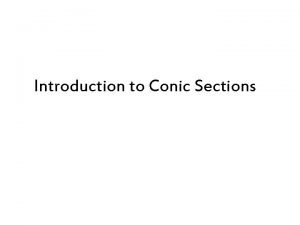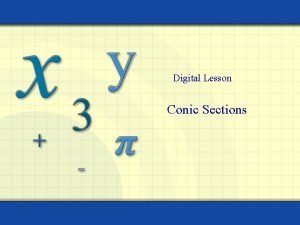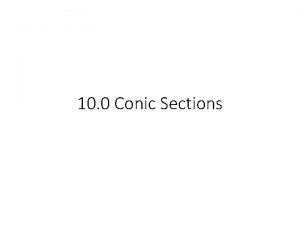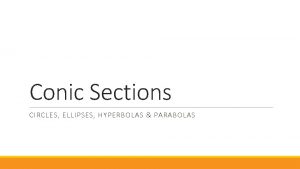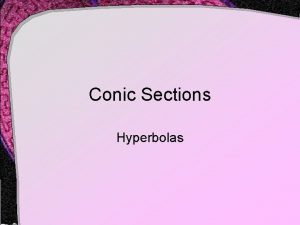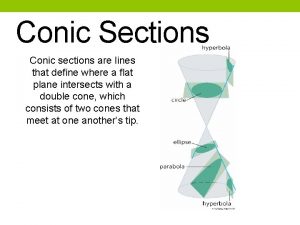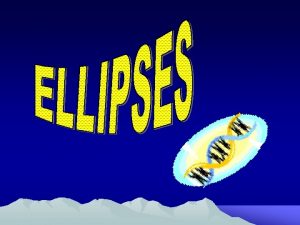Types of Maps Mercator Projections Conic Projections Gnomonic






























- Slides: 30

Types of Maps Mercator Projections Conic Projections Gnomonic Projections Geologic Maps Topographic Maps

Mercator Projections Mercator Projection Is a map that has parallel lines of longitude and latitude Flaws Land Near Poles is exaggerated Shapes are correct, but land area is distorted

Conic Projections Conic Projection Is made by projecting points and lines from globe onto a cone. Very Little Distortion, High Degree of accuracy Best for Mapping Small Areas

Gnomonic Projections is made by projecting points and lines from a globe onto a piece of paper that touches the globe at a single point Distort Directions and Distance

Geologic Maps This is a geologic map of the water resources & rock types at Lake. Tahoe Geologic Maps show the distribution, arrangement & types of rocks located below the soil They also contain information about fault lines & other geologic features

Topographic Maps Detailed maps that show the hills and valleys of an area Use Lines, Symbols, and Colors to represent change

Map Features- map scales & legends

Map Legends Include symbols for both man made and natural features Specific Colors for Habitats Green for Woods Blue for Water


Map Scales Ratio of distance on a map to actual distances on the map 3 Types Verbal: “one inch equals one mile” Graphic: consists of a line that represents a certain distance on Earth Fractional: one unit on map represents one unit on Earth Large Ratio: map covering large area (minor detail) l Small Ratio: map covering little area (major l


An isoline is a line connecting points Isolinesof equal value.

Examples of isolines: Isotherms: points of equal temperature Isobar: points of equal barometric (air) pressure Contour: (all over topo maps) points of equal altitude Concentration of chemicals Anything else you can get a value for. (The weather channel loves isolines!)




Rules for Drawing Isolines: 1. Isolines connect points of equal value. 5 5 10 10 10 15 15

2. Isolines are gentle, curving lines- no sharp corners. 5 5 10 10 10 15 15

3. Isolines are always closed curves even though the map might only show part of it.

4. Isolines NEVER cross- this would mean that one point has two different values. Ex: one spot has two temperatures? 40 ° 50 ° 30 ° 60 ° X 20° Y Z

5. Isolines usually are parallel. (They have a parallel trend. )


Gradient shows how quickly the value changes from one point to another.

A steep (high) gradient changes quickly and the isolines are close together. A gentle (low) gradient changes slowly and the lines are far apart. Steep area Gentle area

Highlight data points.

Fill in gaps in data. This is hard. You have to do a best guess.

Connect the dots. Use rounded lines, nothing sharp pointed.

Go on to the next value until done with map. Remember that contour lines are rounded


 Tan 15
Tan 15 Terrestrial coordinate system
Terrestrial coordinate system Mercator tandem proficisci constituit
Mercator tandem proficisci constituit Mercator crawler
Mercator crawler Robinson projection ap human geography
Robinson projection ap human geography Mercator
Mercator Diferença da projeção de mercator e peters
Diferença da projeção de mercator e peters Mercator url frontier
Mercator url frontier Diferença da projeção de mercator e peters
Diferença da projeção de mercator e peters Winkel tripel map
Winkel tripel map Mercator vs peters
Mercator vs peters Mercator vs peters map
Mercator vs peters map Transverse mercator
Transverse mercator Projeção de mercator
Projeção de mercator Mercator programme
Mercator programme Google maps reittihaku
Google maps reittihaku Conic sections definition
Conic sections definition Types of weather maps
Types of weather maps Types of maps in tourism
Types of maps in tourism How to write directions grade 12
How to write directions grade 12 Floor plan grade 10 maths literacy
Floor plan grade 10 maths literacy Maps in maths literacy
Maps in maths literacy Different map types
Different map types Client side image processing
Client side image processing Different kinds of maps
Different kinds of maps What are the three basic types of maps
What are the three basic types of maps 6 types of maps
6 types of maps Texture map types
Texture map types Types of maps
Types of maps Types of maps
Types of maps Map types
Map types
